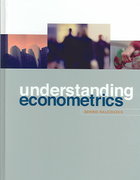QUESTION1: Education decision makings (60%) Following table shows (1) the potential costs of going to a school, (2) potential earnings when a student does not go to the school, and (3) potential earnings when a student goes to the school. All the unit of the currency is in S. (1) (2) (3) Age direct cost of going to school Earnings, not going to school Earnings, going to school 15 150 1200 0 20 350 1300 0 25 0 1500 2200 30 1600 2400 35 1800 2700 40 0 2000 3000 45 2200 3100 50 2500 3500 55 2700 3700 60 3000 4000 65 3100 4100 1-1. (5%) Calculate the cost and benefit of going to the school for each age. (hint: you need to consider opportunity costs of going to school. Reminding the graph in the lecture may help identifying costs and benefits.) From here, instead of using the annual discount rate, we are going to use "5-years discount rate" to make our analysis simpler. If the "5-years discount rate" is r, then you are going to evaluate 5 years later with 14 and 10 years later with (+) , and similar for later years. Assume that when you make educational decisions, you are at the age of 10. 1-2. (15%) Suppose 5-years discount rate is 11%. Compute present value of (1) cost going to school, and (2) benefit of going to school. Comparing present values of cost and benefit, is it worth going to school? 1-3. (15%) Suppose now 5-years discount rate is 25%. Again, compute present value of (1) cost going to school, and (2) benefit of going to school. Comparing present values of cost and benefit, is it worth going to school? Comparing the result in 1-2, and discuss differences in a few sentences. 1-4. (5%) There are some social costs for making students go to schools. What are these "social costs"? Give a few examples. 1-5. (5%) Also, there are some social benefits for making students go to schools. What are these "social benefits"? Give a few examples. 1-6. (15%) Suppose the social costs are $200 per person for every 5 years to support students going to the school. Also suppose the social benefits are $500 per person for every 5 years. We still assume the 5-years discount rate is 25%. Compute cost and benefit of going to school, taking into account both private and social factors. Comparing present values of cost and benefit, is it worth going to school







